Her code name in the O5 Austrian resistance group in World War II was “Mafalda”, but in reality she was Her Serene Highness, the Portuguese Princess, Maria Adelaide de Bragança. During the war she escaped two death sentences by the Gestapo and being sent to Siberia by the Soviets.
Later she came to live in Portugal with her Dutch husband, whom she met as a medical student helping the wounded after the night bombings, in Vienna. She died this year on February, 24 aged 100 years. Last January, 31, on her birthday, the Princess was honored by the Portuguese Republic with the Ordem de Mérito Civil (Civil Merit Order) for a life dedicated to those in need in her country.
A Family in Exile: The Banishment Law of 1834
Maria Adelaide de Bragança van Uden was born in Saint Jean-de-Luz, France, on January, 31 1912. Her father was the Portuguese Prince Dom Miguel de Bragança, son of the exiled Portuguese King, Dom Miguel I and her mother, the German Princess Maria Theresa of Löwenstein-Wertheim- Rosenberg. Maria Adelaide’s godparents were the last King of Portugal Dom Manuel II and his mother, former Queen of Portugal, Amélie, Princess of France.
Until last February, 24, Maria Adelaide was the last surviving granddaughter of a Portuguese King. Dom Miguel I (1802-1866) was King of Portugal between 1828 and 1834, until he went into to exile in Germany, after the Liberal Wars (1828-1834). There he married the Princess Adelaide Löwenstein-Wertheim-Rosenberg.
Miguel I had no fortune. Before his departure to exile, he had given away all his jewels to help the country reconstruction, and later he lost his allowance when he stated that he didn’t recognize Pedro IV, his brother, as the new King of Portugal. Since then, the prince and his descendants were forbidden to ever return to Portugal by the Banishment Law of 1834.
Under the protection of the Austrian Emperor Franz Joseph I
King Miguel’s only male child was Prince Dom Miguel, Maria Adelaide’s father, who became a Lieutenant General in the Austrian army. Emperor Franz Joseph I granted the Prince the privilege of extraterritoriality that allowed him to remain Portuguese. In fact, Miguel enjoyed a friendly and close relationship with the Austrian Imperial Family. His sister Maria Teresa – considered one of the most beautiful women in Europe at the time- married the brother of the Emperor, and his sister Maria José the brother of Empress Sissi.
The First World War : Dona Maria Adelaide experiences poverty
In 1914, Dona Maria Adelaide was a little child but soon she faced, as well as the rest of the family, the hard times of World War I with the lack of food in their palace in Seebenstein. Many times, Princess Maria Theresa returned home from the local stores with no food to give her large family. Dona Maria Adelaide never went hungry because she was the youngest child, but her older siblings did, many times.
In 1918, with the Austrian-Hungarian Empire’s decline, they left their palace in Seebenstein looking for food and moved to a cold convent in Bronnbach, Germany, a property of Princess Maria Theresa’s brother, prince Alois von Löwenstein. Later they managed to return to Seebenstein, where Prince Miguel died in 1927. His wife died seven years later in Vienna.
1938: The Nazis cross the Austrian border
In 1938, Dona Maria Adelaide began to work as a social worker. By then, she was 26 years old. On March, 12 of that year, the Nazis crossed the Austrian border. Dona Maria Adelaide was told to leave her school (she only needed to finish a discipline to conclude her studies as social worker) because of her public dislike of the Nazis. The Princess returned to her old house in Seebenstein where she worked as a farmer.
Sentenced to death for listening to BBC radio and released with Salazar’s help
In July 1944, the Princess was caught for the first time by the Gestapo. She was imprisoned as well as her sister Benedita for listening to the BBC and both are sentenced to death. The family informed Salazar ,the Portuguese prime minister, who, at once, sent a message to Berlin: the Princesses were Portuguese Heritage and they should be released.
Portugal was a neutral country during World War II, but Lisbon was a city full of spies from both sides under the careful supervision of the Portuguese authorities. Salazar knew how to persuade the Fuhrer to release the princesses.
Maria Adelaide’s brother in-law, the wealthy German Prince Karl August von Thurn und Taxis, was imprisoned too. He was Count Stauffenberg’s friend, the German noble who attempted against Hitler’s life. Salazar would be responsible for his release too on April, 26, 1945
The Princess joins the Resistance and is caught by the Gestapo in Vienna
After these events, the Princess decided to join the Resistance group O5. Her code name would be “Mafalda”, in honour of her late sister.
The O5 group organized arms and food transport for the English, as well as the food transport from the Princess’s palace, Seebenstein, to the Resistance. Many were caught, injured and killed. Among them, the Princess was caught too. Her telephone number was found in the pocket of a communist O5 member (Moscow had appealed to their countrymen to help the Austrian Resistance).
The Princess was informed that the Gestapo was looking for her, so she left home and ran to the forest. She took the train to Vienna and hid in the ruins of her aunt Maria das Neves‘ house, more precisely, in the bathtub because the bathroom was the only room with a roof. Tired, she fell asleep. But the Gestapo arrived and their knocking noises on the door awoke the Princess.
Sentenced to death for the second time
The Gestapo took her to prison, asking her where were the Resistance´s weapons. During several days, she was not allowed to eat or drink and she became very weak.
The Gestapo knew she hid Austrian Jews and English men in her house. They went there and killed them all. Dona Maria Adelaide was sentenced to death again, but this time, nobody could help her, not even Salazar.
However, the war was almost at an end. A bomb fell on the prison, destroying the list with the names of the persons to be eliminated by the Gestapo. Dona Maria Adelaide succeeded in passing that information to the outside. The Princess survived, but this would not be the end of her story
Almost deported to Siberia by the Soviets
The communists divided the resistance workers between communists and non communists. The Princess was a Catholic and not a communist so she was in danger again. They decided to deport her to Siberia.
However, something completely unexpected happened two days before her scheduled departure. The officer in charge of the prison saw a paper with the Princess photo on the floor, where it was stated that she was imprisoned because she had tried to help a communist to escape from the Nazis. Dona Maria Adelaide was released.
Alone in Vienna
However, she was alone in Vienna. Her brother, Dom Duarte Nuno, Duke of Bragança, and their sister Filipa were in Switzerland. Her sisters Maria Ana and Isabel were in their palace in Regensburg with their husbands and family (Thurn and Taxis), as well as her sister, Benedita.
Dona Maria Adelaide returned to the family palace in Seebenstein. The farm had been abandoned, personal objects from her parents had been stolen, the furniture was wet and damaged because of the pipes that had burst with the iced water. The Princess returned to Vienna. Months later, the house was demolished and the photos and the letters of her parents had disappeared, as well as the rest of the furniture.
The Princess meets her future husband after a night bombing
But in the middle of the chaos, something very, very special happened. The Princess met her future husband, the Dutch medical student Nicolaas van Uden. One night, after the bombings, Dona Maria Adelaide went to the International Red Cross to help those who were injured.
Seeing a doctor performing surgery, she offered to help him and he accepted. After long working hours, the sun began to rise in the horizon. Dona Maria Adelaide introduced herself asking the doctor’s name. He replied “I’m not a doctor yet. I’m studying Medicine. My name is Nicolaas. Nicolaas van Uden”.
In 1945, they married in a very simple ceremony. Dona Maria Adelaide would say: “ I don’t have a single photo of my wedding.”
The return of the family to Portugal
In 1948, the couple landed in Portugal after the end of the Banishment Law. Dom Francisco van Uden, Dona Maria Adelaide’s third child, was the first Bragança of the exiled branch of the family to be born in Portugal since Dom Miguel I had left the country in 1834.
The couple went to live in the South margin of the River Tagus. The Princess started to work and created the Fundação Dom Nuno Álvares Pereira to help young pregnant women and children. Dona Maria Adelaide visited the poor in their homes, offering them help and support.
In those times, there was no public social security as today. The Princess who said to be afraid of being scared, had lived her life according to her principles of courage and generosity.
“Care about people, not about things.” was probably one of the strongest messages she left us.
(all the photos shown in this post were kindly provided by Maria de Menezes, author of the blog Real Família Portuguesa)
Read more
Fatima; the most famous Portuguese centre of pilgrimage

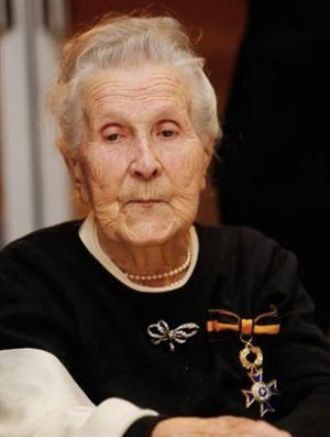
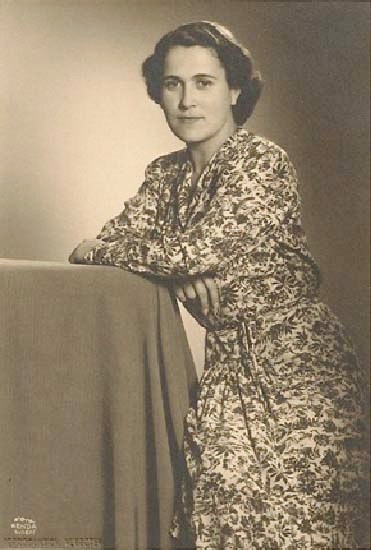
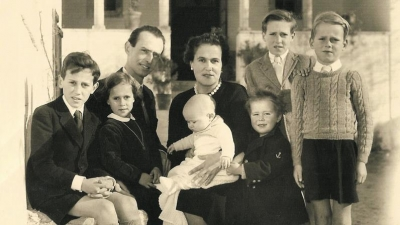
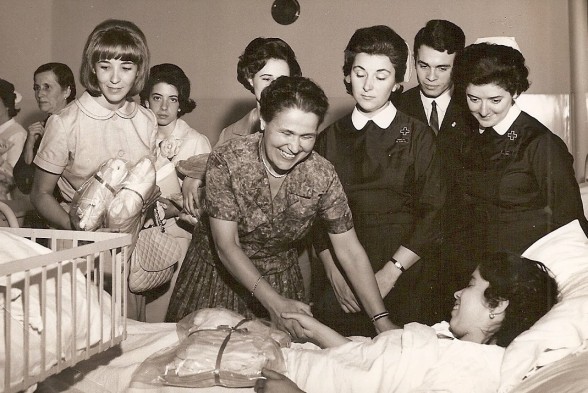
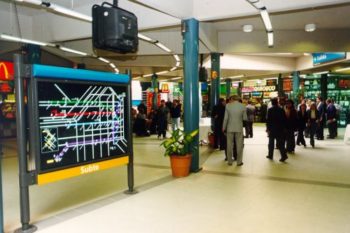
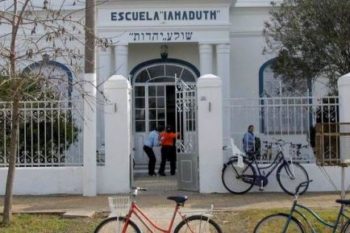
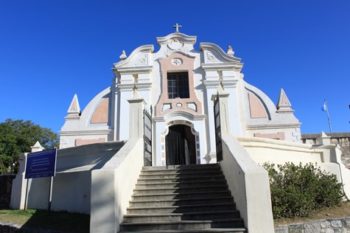

What an amazing life she had! She certainly lived to the fullest, taking risks and fighting for what she believed. An admirable character. She was blessed with a very long life, besides, as a reward for her good work helping people during the war and later in Portugal.
Very nice story!
Sandra, how wonderful you share this with us. I did not know of her and about her. Very interesting!
Happy Easter,
Jacoba